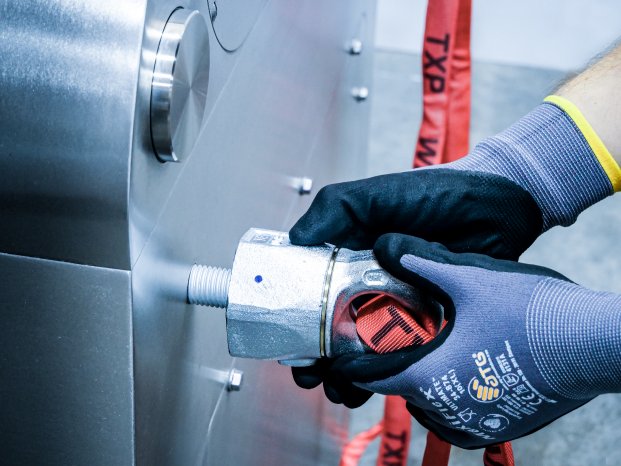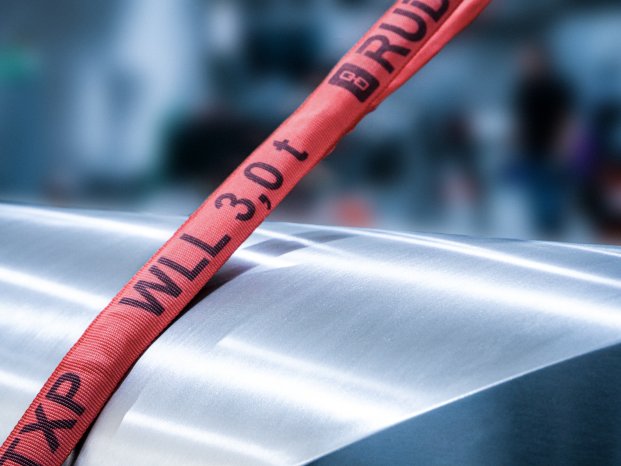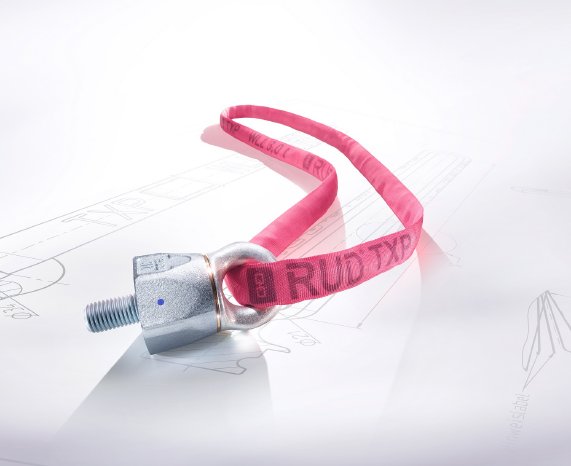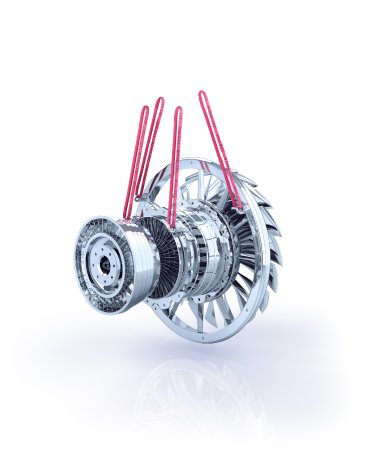- Protect high-value load surfaces – less damage from lifting means
- Avoidance of accidents and damage caused by untested self solutions
- First combination lifting point made from steel and textile with tested and guaranteed total WLL
If loads with polished, painted or chrome-plated surfaces are moved, damage is often caused by lifting means such as chains, chain components, wire rope slings, shackles or hooks. The consequences in many cases are loss of value, functional impairments and correspondingly costly reworking. “With the TXP-Texolution-Point, users can prevent these inconvenient consequences,” explains Hermann Kolb, division manager at RUD. “As only the protective textile, apart from the bolted base body, comes into contact with the surface, the round sling can be hinged directly into hooks of lifting means at a safe distance. Damage to f.e. sensitive class A surfaces can be largely ruled out. The penetration of flaking paint particles into sensitive areas of the workpiece – such as for gearboxes – can be prevented as a result.”
Alternatives to insecure self solutions
The TXP-Texolution-Point is a ready-made solution that makes unsafe and untested self solutions unnecessary. “This is especially important with regard to a possibly necessary reduction of the load-bearing capacity (WLL), caused by improper use of a textile round sling, f.e. when the deflection radii are too small or when knots are formed” explains Hermann Kolb and adds: “This frequently happens with components not specifically developed for such lifting tasks and especially with self solutions.” RUD wants to counter these risky solutions with the TXP-Texolution-Point, a standardised system in which a WLL reduction due to improper solutions is no longer an issue. “Any system is obviously only as good as its weakest link,” stresses Kolb. “With the TXP-Texolution-Point, we would like to give our users the maximum amount of safety – and high-value surfaces the maximum amount of protection.”
Innovative eyelet design contributes to maintaining the overall load capacity (WLL)
Behind the TXP-Texolution-Point is an intensive development process. As Hermann Kolb explains, the critical point of the system is the force transfer from the steel eyelet to the textile sling. If, for example, the radius of the eye is too small or if other improper connections such as knots are being used, the WLL of the entire system can reduced uncontrollably and unforeseeably. “Our engineers have therefore developed a new eye design, in which the radii and transitions are designed optimally for the textile sling – this ensures optimum and textile-protecting force transfer without reducing the WLL,” explains Kolb.
Efficiency and ergonomic advantages
“We are confident that the TXP-Texolution-Point is an economically highly interesting solution in many industries,” says Hermann Kolb. Among others, he lists the automotive industry, aerospace, press plants, turbine construction, bearing and gearbox construction, industrial assembly, plant construction and mould construction. In many other applications, the new lifting point also gives the user additional advantages. For example, its low dead weight noticeably simplifies handling – a considerable advantages in terms of ergonomics. Finally, the TXP-Texolution-Point can remain on the workpiece during transport or between lifting procedures because the protective textile round sling as the only moving part of the lifting point cannot damage the workpiece.
High-tech materials for textile and bolt
Highly modern, high-performance fibres are used as the material for the round sling on the TXP-Texolution-Point. Lengths of either 0.5 m or 1.0 m are available. For the captive and replaceable bolt, RUD uses its patented ICE material, which is characterised by maximum strength with particularly high toughness. The bolt is available in M16, M20 and M24. Apart from the three standard thread sizes, other sizes are also available upon request. In addition, the body has a ball bearing for safe rotating and turning.





